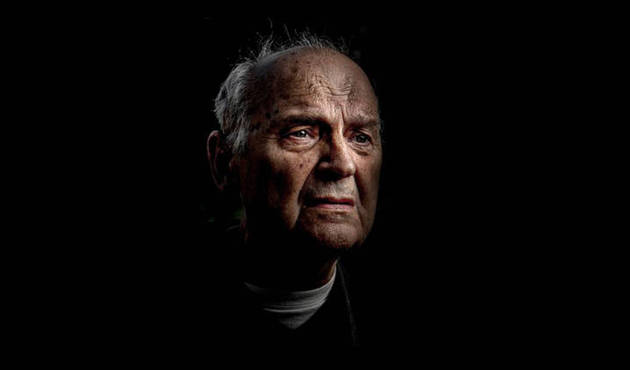O autoroviOsmdesát 12/2016 - 1/2017

Jiří Anderle se narodil roku 1936 v Pavlíkově na Rakovnicku. Roku 1961 vystudoval AVU (malbu u Antonína Pelce a grafiku u Vladimíra Silovského). Styl jeho kresby grafiky se vyhraňoval v době profesionálního působení v Černém divadle, se kterým sjezdil skoro celý svět jako technik i herec. Známý, zejména v zahraničí, začal být v polovině 60. let. V letech 1969-73 působil na VŠUP jako asistent Zdeňka Sklenáře a Jiřího Trnky. V desítkách grafických a obrazových cyklů Anderle naléhavě a působivě vyjadřuje existenciální úzkost člověka jak konkrétní (válka), tak i obecnou, nadčasovou (stárnutí, samota). V poslední době se od těchto výstražných až tragických témat posouvá a blíží se k abstrakci. Počet Anderleho samostatných výstav v celém světě se blíží stovce, tam také získal okolo čtyřiceti cen. Je zastoupen například v newyorském Metropolitním muzeu i v pařížském Pompidouově centru. Jako všestranně múzický člověk je kupříkladu i bubeníkem kapely Grafičanka a autorem, hercem i hudebním redaktorem oblíbeného rozhlasového pořadu Láska za lásku.
Jiri Anderle - born in Pavlikov, 1936. A Czech painter, draughtsman and printmaker. From 1955 to 1961, Anderle studied painting and graphic art at the Academy of Fine Arts in Prague. From 1961 to 1968, he worked at the Black Theatre of Jiri Srnec, with which he travelled the world as a technician and actor. Anderle's primary means of expression is drawing. His work forms closed complexes that capture moments of human existence, either in connection with ancient myths and legends or as aspects of contemporary life. The phenomenon of time is an important expressive element in his work, as a metaphor or in the form of a phased record of change, for instance ageing process. His whole work is based on the contrast of the real and the fantastic, logic and absurdity, beauty and hideousness, good and evil. These contrasts are already evident in his early drawings of figural scenes from dreams that are connected with the later apocalyptic visions. In his series of paintings, drawings and graphic works Commedia dell'arte (1985) scenes of atrocities are merged with fantastic drawings of human figures and heads. In the series of paintings, drawings and graphics Appassionata humana (1989) he re-evaluated Surrealist imagery and formlessness.
